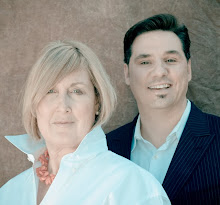"A Sunday Afternoon on the Isle of La Grande Jatte" by Georges-Pierre Seurat.
Another view of the topiary garden at the old location of the Deaf School in Columbus Ohio.
Topiary makes my heart sing. In fact, I am currently having a love affair with 4 mini-hedge topiaries in a window box near my abode. I find that I can give myself any excuse to take the “long way” home just to drive by and have a look see at these specimens of botanical joy who stand together, as if family, eagerly awaiting lord and master at the end of the day.
A shot David took in London of a "Boxwood family".
I’ve long been a fan of these magical objects of living sculpture. Upon further investigation I’ve learned an amazing amount. What began as pure delight has actually broadened my scope of all things beautiful.
A wonderful view of Hidcote Gardens, England with delightful topiary birds.
Beautiful Beckley Park topiary in Oxfordshire, England.
On that note… Topiary is defined as “the art of creating sculptures in the medium of clipped trees and shrubs”. And this is education here… “Shrubs considered for topiary are evergreen, have small leaves or needles, produce dense foliage and have compact and/or columnar growth habits. The most common plants used are box, bay laurel, holly, myrtle and yew”. Traditionally they were pruned and/or trained into geometric shapes: balls or cubes, obelisks, pyramids, cones, tapering spirals etc and were made of stone and lead sculptures and depended on patience and a steady hand, much like bonsai. Today, however, shaped wire cages are often used.
Topiaries at Fingask Castle, Scotland.
Topiarius (topiary) dates from Roman times. Cneius Matius Calvena (belonging to the “inner circle” of Julius Caesar) is credited with introducing the first topiary into the atrium of the roman villa. The trend caught on, and over time, the art of garden topiary manifested itself into the parterre gardens and terraces of
aristocratic Europe and England.
Gardens at Villa d'Este at Tivoli, near Rome, Italy.
A typical Roman topiary garden.
Topiary was not only popular in Europe and England but also the Far East, namely Japan and China. In existence for centuries, this art took a different name and overall aesthetic style. It is more familiar to us as Bonsai. Japanese ‘cloud pruning’ may be the closest comparison to the European “topiary”.
 "Cloud pruning" in a Japanese Zen garden.
"Cloud pruning" in a Japanese Zen garden.
Topiary became popular in the US as early as the early 1800’s at the Walter Hunnewell Arboretum at Wellesley College in Wellesley, Massachusetts and another classic example in the Colonial Revival gardens and the grand manner of the American Renaissance (1880-1920).
Vintage photo of Walter Hunnewell Arboretum at Wellesley College.
Gardens at Colonial Williamsburg in Williamsburg, Virginia.
In 1962, the “American Portable style” topiary was introduced by Walt Disney at Disneyland when he sought to recreate his cartoon characters in landscape shrubbery. This style of topiary is based on a steel wire frame that is either stuffed with sphagnum moss and planted, or a frame that has shrubbery growing from within as a permanent cutting guide. The frame allows the plants to grow into every curve with a built in guide.
"Portable Style" topiaries of Donald Duck and Pluto at Disneyland.
This “portable style” has led to numerous imaginative topiary displays, notably Jeff Koon’s “Puppy”, which has been re-created worldwide and displays at the 2008 Olympics in Beijing China.
Jeff Koons "Puppy" on display in Bilbao, Spain.
Topiaries in the official garden of the 2008 Olympics in Beijing, China.
So here we have it. What was in the beginning of this post, pure adoration for the simply clipped rosemary topiary in my living room has now expanded itself and I am ready to take on the world of box, yew, laurel and myrtle, and hopefully, not just literally.
Barbara Ashfield










































































